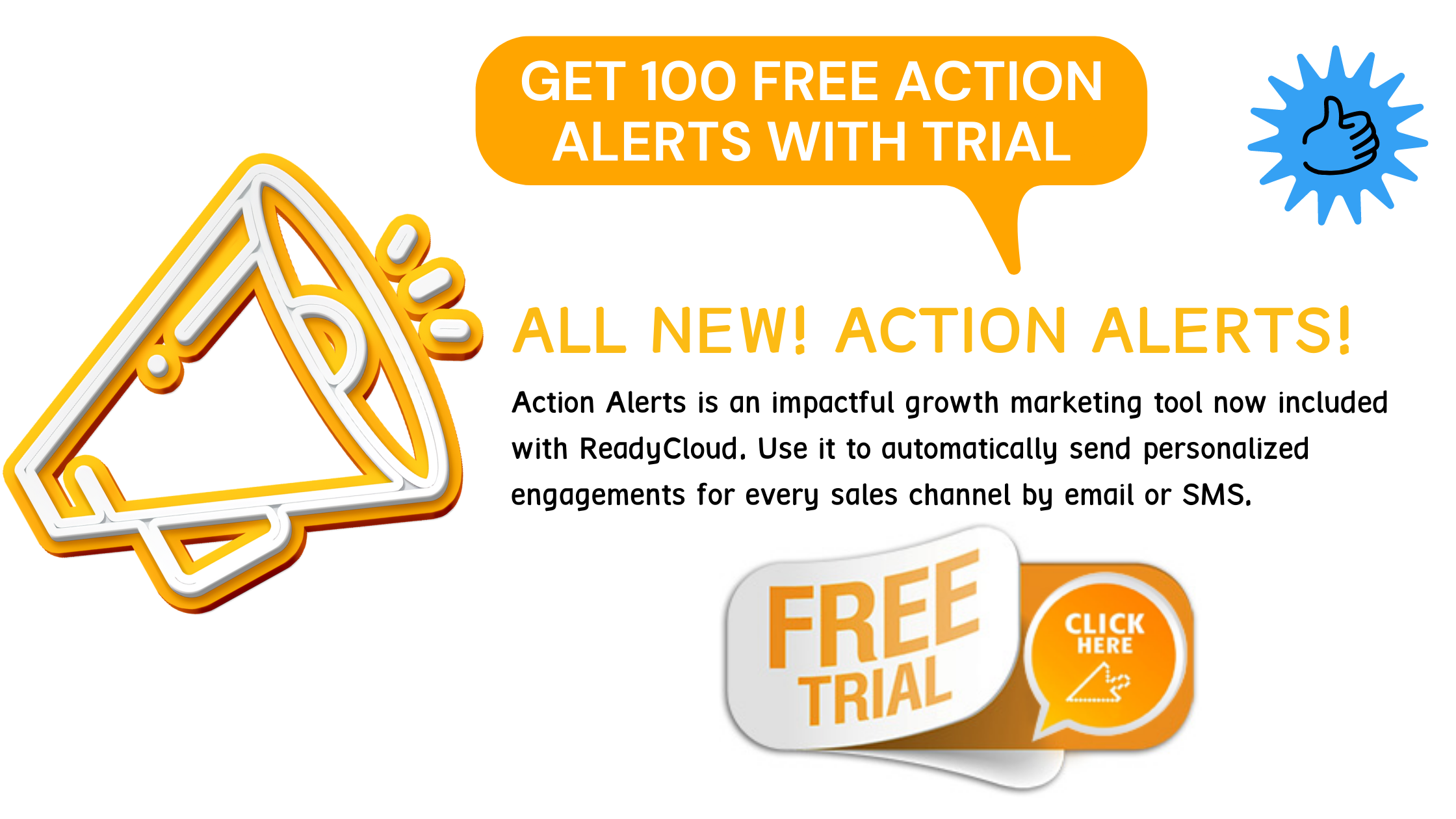SMS vs. Email Marketing – Which One is Best for Ecommerce?

The landscape surrounding ecommerce is rapidly evolving, with new trends and consumer behaviors emerging all the time. Choosing the right marketing medium between SMS, email or both, can help ecommerce retailers continuously adapt and send the right message to their customers. In turn, this drives awareness and traffic to ecommerce brands, and ultimately drives business success.
Marketers often turn to a mix of marketing channels to communicate with their customers and drive traffic to their site. To choose the right method for your online business, it is important to first have a strategy in place. Doing so sets a framework for all your marketing activities and engagements. With that in place, brands will be able to pick out the appropriate platforms to achieve their objectives.
It can be tricky to decide on a marketing channel that is best for your brand, as there is no one-size-fits-all solution. To put it simply: it all depends on your goals, priorities, and capabilities.
Read on to learn more.
SMS & Email Marketing – An overview
Did you know that email marketing has been around since before the internet? The first dated email marketing blast was sent in 1978 to 400 recipients and resulted in $13 million in sales. Even with the ever-changing technological landscape, email has withstood the test of time and technological revolution, and it remains one of the most popular forms of digital communication today.
The great thing about email marketing is that it can be automated and sent to specific users and at specific times, which helps brands boost awareness and customer retention rates without exhausting too much effort in the process.
SMS marketing, on the other hand, is comparably new in the vast world of business. Even with the explosion of social media messaging platforms, SMS remains the most-used device feature among smartphone users. With high open rates and ease of sending, brands today use SMS to regularly communicate with their customers.
Now, let’s dive into the specifics of SMS marketing and email marketing for ecommerce businesses.
Differences between SMS & Email Marketing?
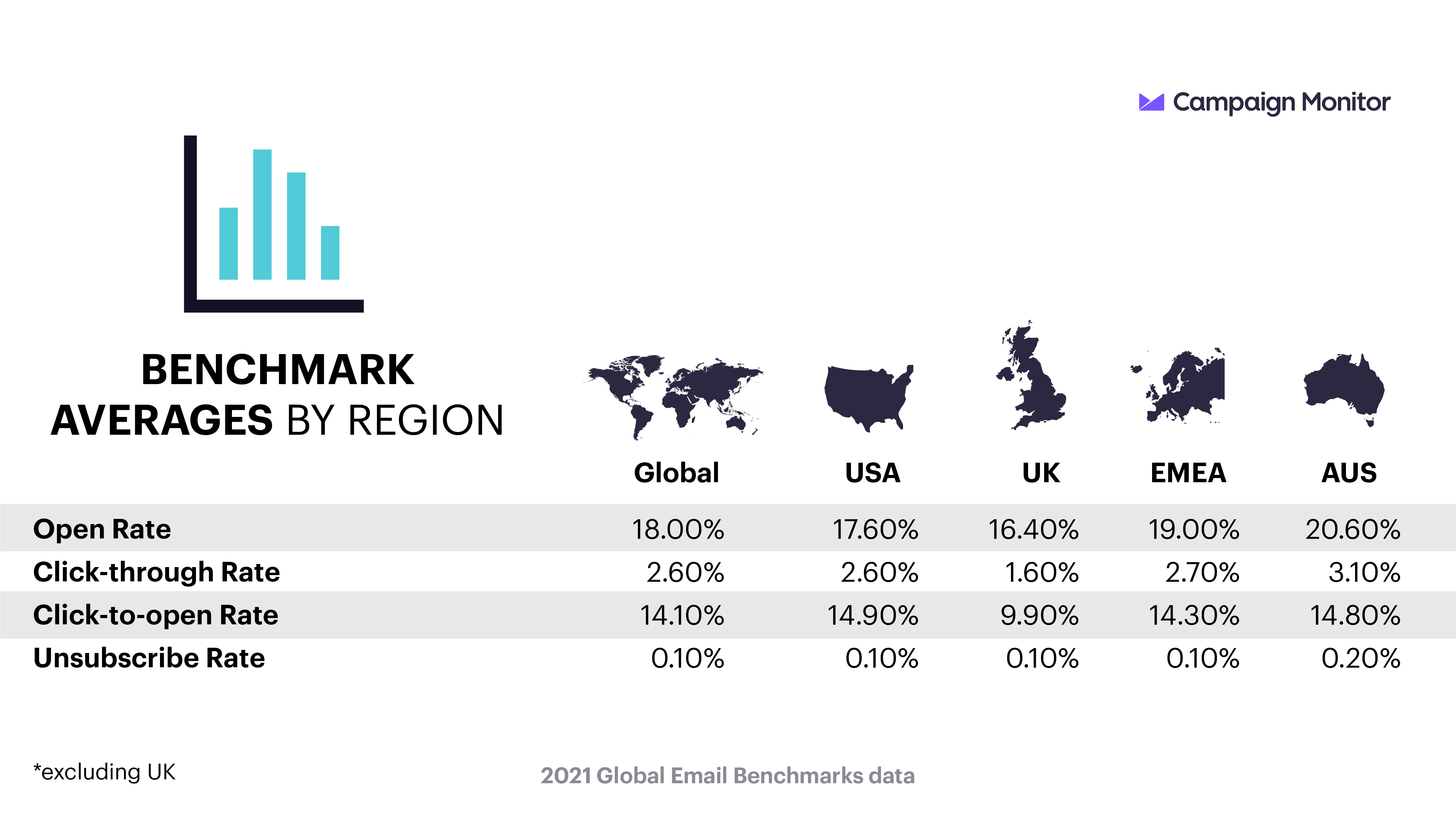
Open Rates
The first step to driving brand awareness is to be seen and heard. Your brand could put out the best marketing collateral ever, but it would be useless if no one could see it. It is imperative to campaign success that your customers see what you want to tell them. SMS has amongst one of the highest open rates for any form of marketing promotion. Research has shown that text messages receive a 98% open rate, which is about as good as it gets, as far as engagement rates are concerned.
By comparison, marketing emails have an open rate of about 18%. This is not to say that your emails will all be ignored, though. Globally, email usership has been growing and is projected to reach 4.6 billion users by 2025. As more people start to use these platforms, you can be sure that your brand will be seen and these open rates and related metrics will improve.

Click-Through Rates
Click-Through Rates (CTR) are a key metric that tell you whether your marketing material has been effective in convincing the viewer to take desired action. This measurement shows the number of people that clicked on a specific link, CTA or an image within a message.
While there is a common misconception that CTRs solely depend on copy, the type of platform also plays a significant role. For example, SMS has a CTR of 10.63%, while the average for email marketing hovers around 2.6%.
One of the disadvantages of email is that the recipients can easily mark the message as spam. What’s more, with the rise of cold outreach, consumers are getting dozens of marketing emails daily, leading to them unsubscribing. With ecommerce businesses, there are new promotions daily, sometimes even by the hour. So, it is crucial that marketers do not cross the line between spamming and helpful communication.

Return on Investment (ROI)
In general, your ROI for marketing campaigns depends on the investment and responses you get. Because these factors vary so greatly, measuring ROI is a very campaign specific task. We cannot tell you whether SMS or email marketing can generate a higher ROI. However, there are some practices you can implement to maximize your returns.
For instance, sending a followup SMS to a customer that reminds them to read your email, can increase open rates by up to 30%. You can also maximize output by sending the right message on the right channels. Each marketing avenue can be used for different messages. Deals, coupons and concise content generally do better on SMS than email, for example. On the contrary, emails can be used to foster a sense of community or send out meaningful and educational information. Yet, they can be highly effective engagement tools, too, depending on the brand and the message, even when used for cold email outreach.
Time Sensitivity
Smartphone users nowadays are constantly connected to their devices, with the average user spending 3 hours or more per day connected. For marketers, this opens the opportunity to send time-sensitive messages through SMS. Some of the ways to leverage on the connectivity of SMS is by sending shipping alerts or flash deals (which are some of the most opened and responded to SMS and email messages for growth marketing you can send).
The great thing about SMS is that you can send out texts right into the hands of your customers, and in real-time. Emails, on the other hand, require a working connection. Additionally, while 47% of users check their emails on a mobile application, 26.9% still prefer doing this on desktop — so there are some drawbacks to either side of the equation.

Content Size
When it comes to content size, email offers you more flexibility with the number of characters. Longform content, such as newsletters, educational articles, infographics and press announcements, do better on emails as they are read on larger screens, such as tablets or desktops. As the world becomes more mobile-centric, the average human attention span is decreasing, which means that short, concise and relevant messages are key.
Did you know that the human attention span is a mere 8 seconds? Pair this with the tiny screens on our smartphones, and today’s marketers and business owners must ensure that text messages will be able to encapsulate brand messages through concise and short content. This can come in the form of urgent alerts, reminders, or messages that require two-way communication for the highest enagement potential.
Competition
SMS marketing isn’t new, but is still considered to be an up-and-coming marketing avenue with a high adoption rate. This means it can be helpful for businesses to tap into it early to gain customer’s attention. Email inboxes today are saturated and highly competitive – an average office worker can get up to 121 emails a day, but you don’t see that many marketing messages coming into your smartphone. At least not yet, that is.
Campaign opt-ins
Whichever medium you choose, it is important that your consumers are open to receive promotional material. Having willing recipients will make it easier for your brand to communicate the desired actionable steps.
Recent statistics find that 75% of customers want to receive text messages from brands and nearly 49 million opted in for SMS marketing campaigns last year. Email signups, on the other hand, have a 1.95% opt-in rate on average across industries. Naturally, this alludes to SMS being the more favorable medium. But in reality, your online business should be using both.
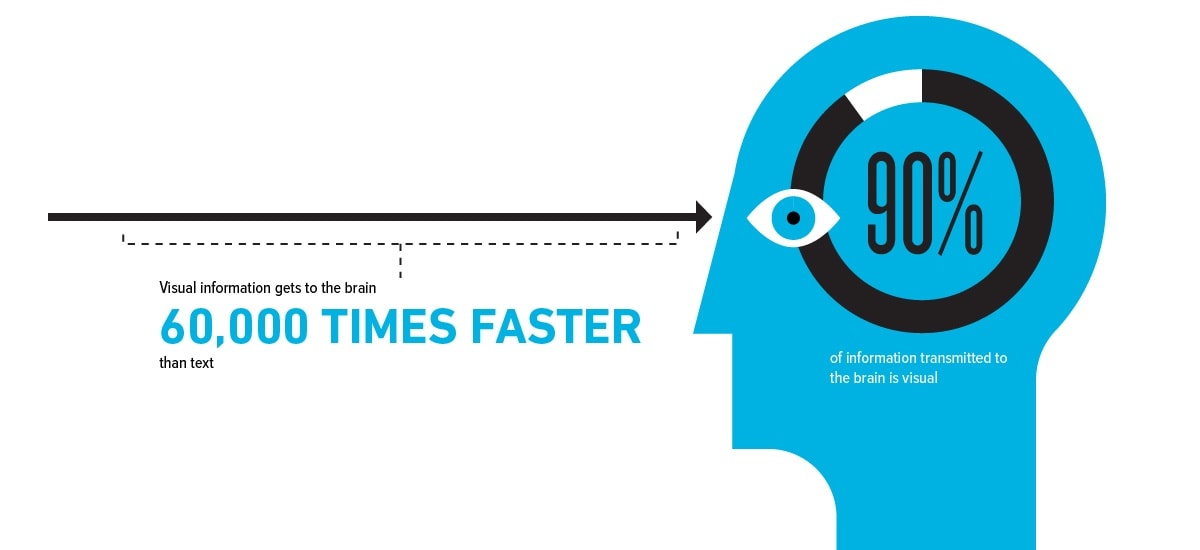
Design
Visual design plays an important role in holding the attention of the viewer. Design can also be used to capture key brand elements and visual identity. On that note, email offers a platform for more multimedia and design creativity as compared to SMS, which is mostly text-based.
Studies have shown that the human brain processes visual designs 60,000 times faster than text. With that in mind, including visually appealing CTAs and image or video placeholders contained within email marketing messages can further drive your audience to act on the message. Still, let’s also not forget that almost 65% of consumers go on to make a purchase from an ecommerce store after recieving a promotional text message from them.
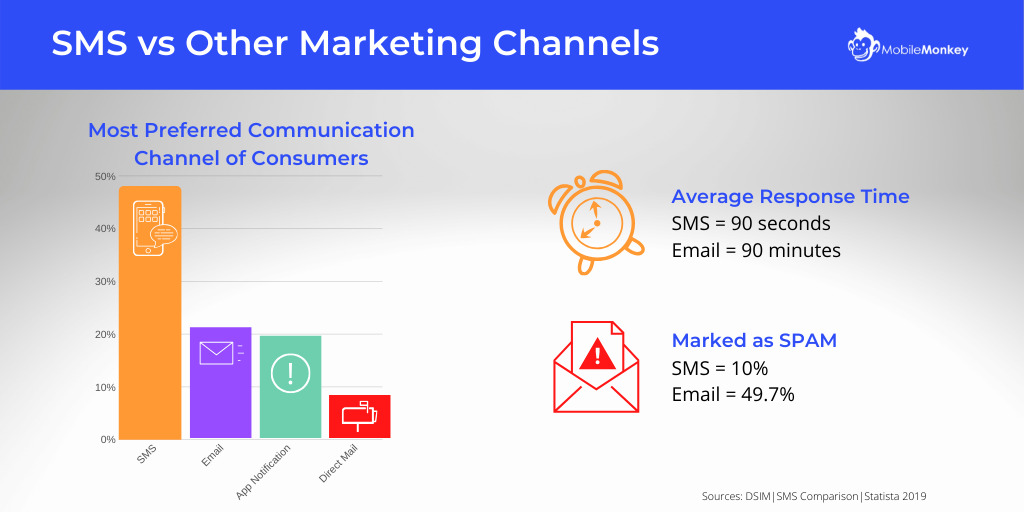
Response Rate
It is not enough that customers read your messages. A key engagement metric to measure effectiveness of SMS or email campaigns is through response rate or time. This way, you know that they’re definitely taking action, and quickly. SMS has a striking advantage over email in terms of response.
On average, it takes 90 seconds for the average consumer to respond to a text message. The response time for emails is much higher, standing at about 90 minutes. Let’s also not overlook the fact that SMS also has a response rate that’s eight times higher than emails. With such impressive numbers, it’s hard to overlook the benefits that both these marketing channels can offer when used in tandem.
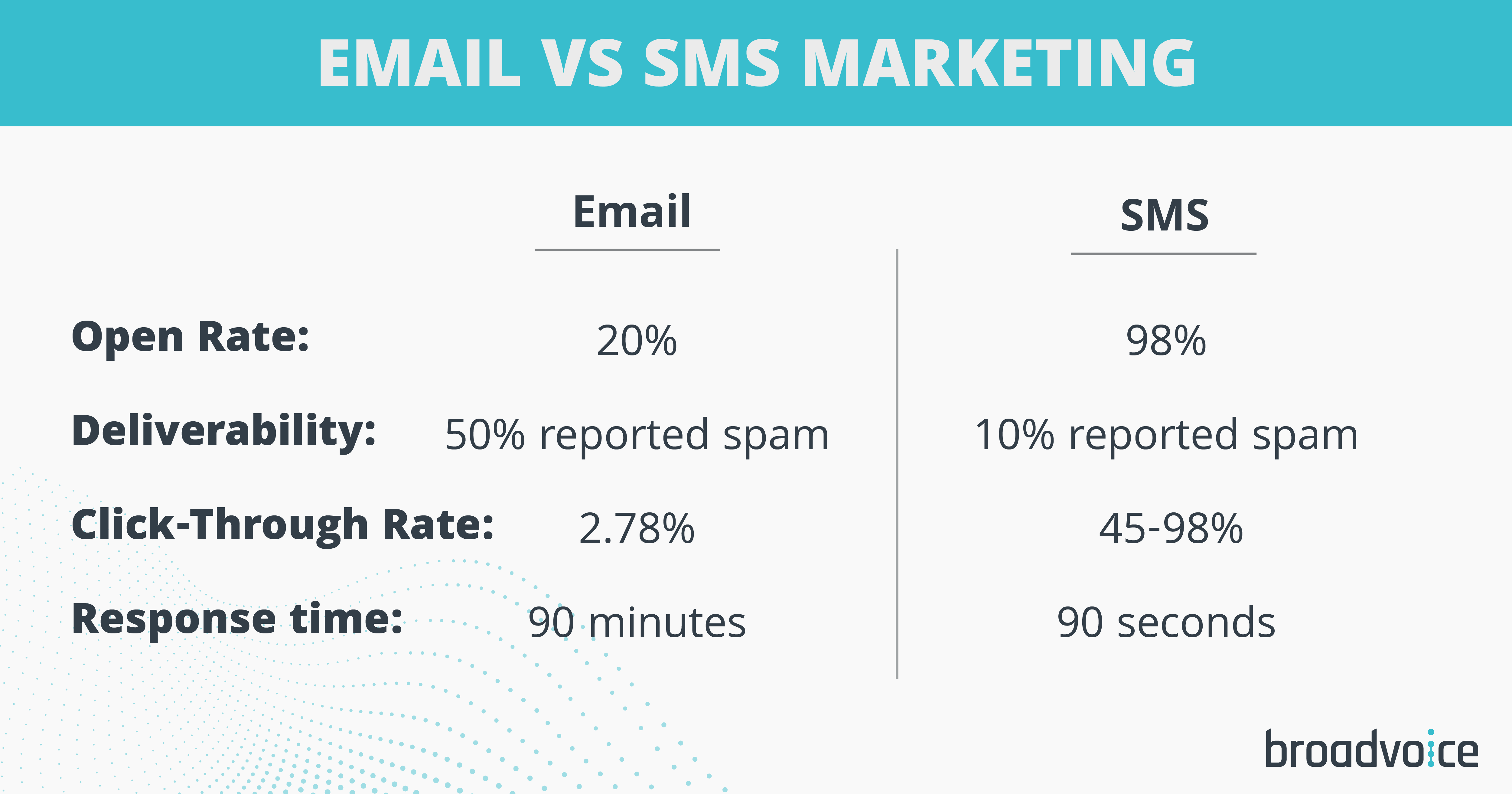
Sales Conversion Rate
Conversions come from hard work and a solid blueprint. By planning your SMS or email marketing campaigns meticulously, you can ensure that the customer moves through the sales funnel seamlessly. Aside from sending promotional messages, businesses can also use messaging to offer things like order updates, shipping and tracking information, return delivery acceptance updates and customer service.
By sending out the right message at the right time, emails have been used to boost conversions greatly. For instance, last year, welcome emails were the highest-converting messages, with a healthy 51.9% overall conversion rate. This was followed by cart abandonment emails, which boasted a 33.9% conversion rate. Looking at the bigger picture, SMS has a reported conversion rate of 29% while email has a comparatively meager 3.26%.
Automation
The great thing about SMS and email marketing is that they can be personalized. Sending out messages that are specific to your customer’s needs can generate more effective results and improve customer loyalty. Choosing the right software for your marketing needs, like Action Alerts, can help your business improve engagement rates and earn repeat business.
Which One is Better?
SMS Marketing has seen a high adoption and success rate as an up-and-coming digital marketing avenue. It is easy to see why this customizable and real-time solution to brand messaging proves to be a highly effective mode of communication with your ecommerce customer base.
Of course, that is not to say that email marketing is not useful, too. Many modern businesses have seen great success with well-planned email marketing campaigns. There are many factors that contribute to the right implementation of your marketing plan. As mentioned, there are no strict guidelines or ways to hit your business targets.
Ultimately, it depends on what your brand wants to achieve. The common question here is how to do it right. With the perfect mix for your marketing strategy, you can reap the benefits of both channels and propel your business to success.
Email & SMS Marketing For Your Online Store
Use Action Alerts ecommerce email and SMS marketing to keep your customers updated about their order, a delivery, a return label acceptance scan and more. Remarket with Action Alerts to cross-promote and upsell new products and to keep your brand in sight. Each ReadyCloud CRM user license comes with 100 FREE Action Alerts you can use to grow your business each month. Start for free today, no credit card is needed.
Share On:

